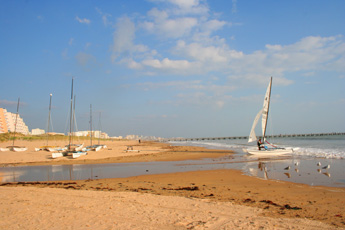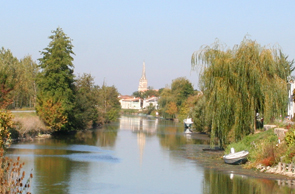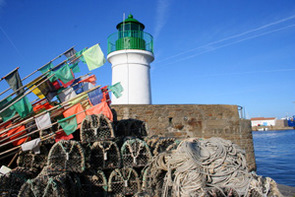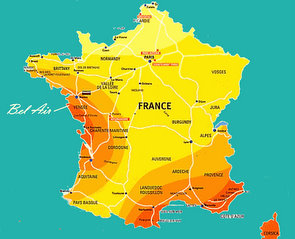
Tourist Information, Vendee History, Accommodation, Photos, Reviews, Maps,
Custom Search
Web |


|
| contact us | ||
| Advertise |
|
| month by month guide | ||
| Entertainment |
| January | ||
| February | ||
| March | ||
| April | ||
| May | ||
| June | ||
| July | ||
| August | ||
| September | ||
| October | ||
| November | ||
| December |
| Car Boot Sale | ||
| Discos |
|
| Getting About | ||
| Public Holidays, | ||
| Getting to the Vendee | ||
| Bike Hire | ||
| Photos | ||
| Weather | ||
| Vendee Wars | ||
| Videos | ||
| Maps & Books | ||
| Vendee Wines | ||
| Vendee Information |
|
| Vendee Restaurants | ||
| Coastal Region | ||
| Haut Bocage | ||
| Bas Bocage | ||
| Plaine | ||
| Sud Vendee | ||
| Marais Poitevin | ||
| Marais Breton | ||
| Marais Olonne |
|
| All Activities | ||
| fishing | ||
| sailing | ||
| golf | ||
| Walking | ||
| Cycling | ||
| Surfing | ||
| Karting | ||
| Swimming | ||
| Canoeing | ||
| Paintball | ||
| Horse Riding | ||
| Adventure Parks | ||
| Arts & Crafts |
|
| All Attractions | ||
| Theme Parks | ||
| Towns and Villages | ||
| Chateaux and Churches | ||
| beaches of the vendee | ||
| Adventure Parks | ||
| Amusement Parks | ||
| Water Parks | ||
| Childrens Attractions | ||
| Markets | ||
| Zoos & Gardens | ||
| Museums | ||
| Rivers of the Vendee | ||
| Vendee Islands | ||
| Vendee Wars Sites | ||
| Mills of the Vendee |
| inland beaches |
|
| Gites | ||
| Hotels | ||
| Camping | ||
| Bed & Breakfast |
| Gites with Pools | ||
| Gites Complex | ||
| All Gites |
| Camping Coastal Region | ||
| Camping Haut Bocage | ||
| Camping Marais Poitevin | ||
| Camping Sud Vendee |
|
| Coastal Region | ||
| Bas Bocage | ||
| Haut Bocage | ||
| Plaine | ||
| Sud Vendee | ||
| Marais Poitevin | ||
| Marais Breton | ||
| Marais Olonne | ||
| Mervent Forest |



Vendée Weather
Being located on the French Atlantic coast the Vendée is blessed with some of the sunniest weather in France, it is equivalent to the weather found on the French Riviera. Its
coastal location gives the area a mainly maritime climate, but that is
only part of the reason for such wonderful weather, and several factors
come together to contribute to the Vendée’s magnificent climate. If you
look at the map denoting hours of sunshine you will notice that the good
weather starts close to the coast near the mouth of the Loire and then
widens to its maximum around Fontenay-le-Comte in the South Vendée
before declining to finish at the mouth of the Gironde near Bordeaux.
Although rivers do seem to play their part, the Vendéen weather is more due to the prevailing weather being driven by the Atlantic flow, in the form of the Gulf Stream. The weather breaks in the Bay of Biscay one spur forms the Western Approaches and gives Northern Europe its mild humid weather, and the other spur heads south to form the Portuguese trade winds. The void left behind is the start of that fine weather. It is of course not entirely that simple, the geographic makeup of the land is also a major contributor to the climate of the region. The Vendée has 3 pockets of marshlands that run down the coast, these areas also extend some distance inland, and this is especially true of the Marais Poitevin which advances some 40 kilometres from the sea. There is also the Luçon to Fontenay Prairie, an area of low flat land, large fields and very few trees. From the marais and the prairie the land starts to rise and is then covered in trees, woods and forests, this is called the bocage.
As the oncoming weather reaches the bocage it starts to rise, this cools the air and the prevalence of trees further adds to the cooling process. Clouds quickly form and hence more rain. This means that within 15 to 20 kilometres east of the Prairie the weather changes considerably. The Vendée Charente Maritime micro climate produces some 2,400 hours of sunshine a year and coupled with some of the best blue flag beaches in France it is not difficult to see why the Vendée is one of Europe’s top holiday destinations.
Winter
Although winters can certainly be chilly in the Vendée there is usually an absence of really cold temperatures especially in the coastal areas, thanks mainly to the influence of the warming currents from the Gulf Stream. Winters average 5 degrees centigrade in the coldest months of December and January, with highs around 8 degrees centigrade and lows around 2 degrees centigrade. Freezing temperatures can occur but they are not common, and frosts and snowfall are much more likely the farther inland one goes. Winter is the wettest season of the year with damp cloudy days not uncommon. December and January both average more than 80mm of rainfall, and February sees just over 70mm.
Spring
The cold winter weather gradually gives way to summer throughout the months of spring. So if one visits early in spring one can still experience cold wet weather, but by the end of the season one can be enjoying plenty of warm sunny days. In March average temperatures are a cool 8 degrees centigrade, in April they rise to 10 degrees centigrade and by May they are 14 degrees centigrade with daily highs in the high teens being common. Rainfall is almost 70mm in March but by May it is down to close to 50mm. April and May enjoy an excellent an average of 7 hours of sunshine per day. Late spring can be an ideal time to visit as you can take advantage of some fine weather before the summer crowds arrive
Summer
From June to September daily temperatures are regularly in the 20’s. July and August are the hottest months with average temperatures of 18-19 degrees centigrade, varying between highs in the mid 20’s and lows in the low to mid teens. Summer temperatures are in general very comfortable and it rarely gets too hot for comfort, especially on the coast, although occasional summer heat waves can bring temperatures in the 30’s. There is little rain and lots of sunshine in the summer. June, July and August are the driest months with around 40mm of rain. From September rainfall starts to rise a little. Days in peak summer enjoy an average of up to 9 hours of sunshine
Autumn
Early autumn can enjoy plenty of warm sunny weather but it can start to get a bit cool and wet by the end of the season. Early autumn can be an excellent time to visit the Vendée as one can often enjoy fabulous weather without the summer crowds. September still enjoys plenty of summery weather with daily highs averaging 21 degrees centigrade. Rainfall does increase as the month goes on, but average rainfall is only 63mm for the month. October can also enjoy warm sunny weather with temperatures in the high teens, however temperatures can equally begin to dip into single figures. Rainfall increases with the month averaging 78mm, and November is one the wettest months of the year with an average rainfall of almost 90mm. In terms of temperature it is also quite cool with temperatures more often than not in single figures. By the end of the month one can certainly feel the onset of winter.
Return to find more General information on the Vendée
Although rivers do seem to play their part, the Vendéen weather is more due to the prevailing weather being driven by the Atlantic flow, in the form of the Gulf Stream. The weather breaks in the Bay of Biscay one spur forms the Western Approaches and gives Northern Europe its mild humid weather, and the other spur heads south to form the Portuguese trade winds. The void left behind is the start of that fine weather. It is of course not entirely that simple, the geographic makeup of the land is also a major contributor to the climate of the region. The Vendée has 3 pockets of marshlands that run down the coast, these areas also extend some distance inland, and this is especially true of the Marais Poitevin which advances some 40 kilometres from the sea. There is also the Luçon to Fontenay Prairie, an area of low flat land, large fields and very few trees. From the marais and the prairie the land starts to rise and is then covered in trees, woods and forests, this is called the bocage.
As the oncoming weather reaches the bocage it starts to rise, this cools the air and the prevalence of trees further adds to the cooling process. Clouds quickly form and hence more rain. This means that within 15 to 20 kilometres east of the Prairie the weather changes considerably. The Vendée Charente Maritime micro climate produces some 2,400 hours of sunshine a year and coupled with some of the best blue flag beaches in France it is not difficult to see why the Vendée is one of Europe’s top holiday destinations.
Winter
Although winters can certainly be chilly in the Vendée there is usually an absence of really cold temperatures especially in the coastal areas, thanks mainly to the influence of the warming currents from the Gulf Stream. Winters average 5 degrees centigrade in the coldest months of December and January, with highs around 8 degrees centigrade and lows around 2 degrees centigrade. Freezing temperatures can occur but they are not common, and frosts and snowfall are much more likely the farther inland one goes. Winter is the wettest season of the year with damp cloudy days not uncommon. December and January both average more than 80mm of rainfall, and February sees just over 70mm.
Spring
The cold winter weather gradually gives way to summer throughout the months of spring. So if one visits early in spring one can still experience cold wet weather, but by the end of the season one can be enjoying plenty of warm sunny days. In March average temperatures are a cool 8 degrees centigrade, in April they rise to 10 degrees centigrade and by May they are 14 degrees centigrade with daily highs in the high teens being common. Rainfall is almost 70mm in March but by May it is down to close to 50mm. April and May enjoy an excellent an average of 7 hours of sunshine per day. Late spring can be an ideal time to visit as you can take advantage of some fine weather before the summer crowds arrive
Summer
From June to September daily temperatures are regularly in the 20’s. July and August are the hottest months with average temperatures of 18-19 degrees centigrade, varying between highs in the mid 20’s and lows in the low to mid teens. Summer temperatures are in general very comfortable and it rarely gets too hot for comfort, especially on the coast, although occasional summer heat waves can bring temperatures in the 30’s. There is little rain and lots of sunshine in the summer. June, July and August are the driest months with around 40mm of rain. From September rainfall starts to rise a little. Days in peak summer enjoy an average of up to 9 hours of sunshine
Autumn
Early autumn can enjoy plenty of warm sunny weather but it can start to get a bit cool and wet by the end of the season. Early autumn can be an excellent time to visit the Vendée as one can often enjoy fabulous weather without the summer crowds. September still enjoys plenty of summery weather with daily highs averaging 21 degrees centigrade. Rainfall does increase as the month goes on, but average rainfall is only 63mm for the month. October can also enjoy warm sunny weather with temperatures in the high teens, however temperatures can equally begin to dip into single figures. Rainfall increases with the month averaging 78mm, and November is one the wettest months of the year with an average rainfall of almost 90mm. In terms of temperature it is also quite cool with temperatures more often than not in single figures. By the end of the month one can certainly feel the onset of winter.
Return to find more General information on the Vendée

5 day weather forecast for the Vendee
In
accordance with the law "and Freedoms" of January 6, 1978, you have the
right to access and rectify information concerning you. If you wish to
exercise this right, please contact us.
© Copyright Vendee-Guide.co.uk 2009-12 This Website is built with Bluevoda from Vodahost
© Copyright Vendee-Guide.co.uk 2009-12 This Website is built with Bluevoda from Vodahost





